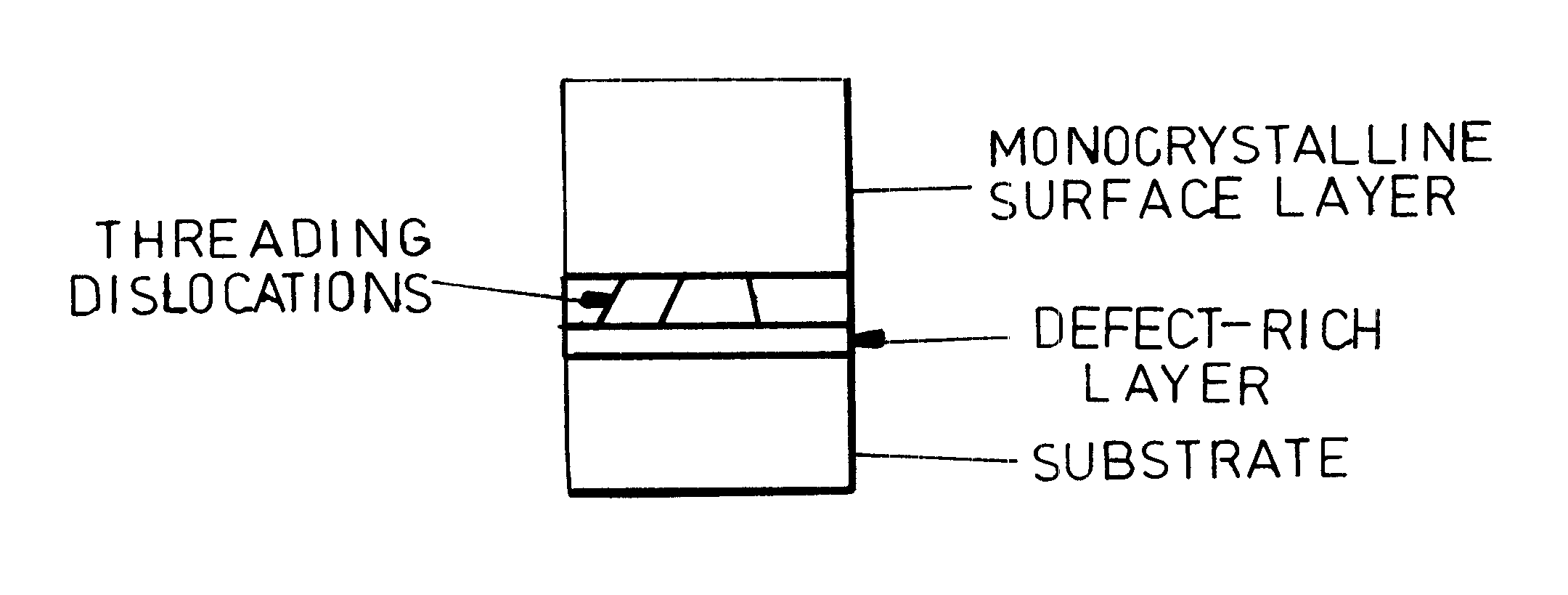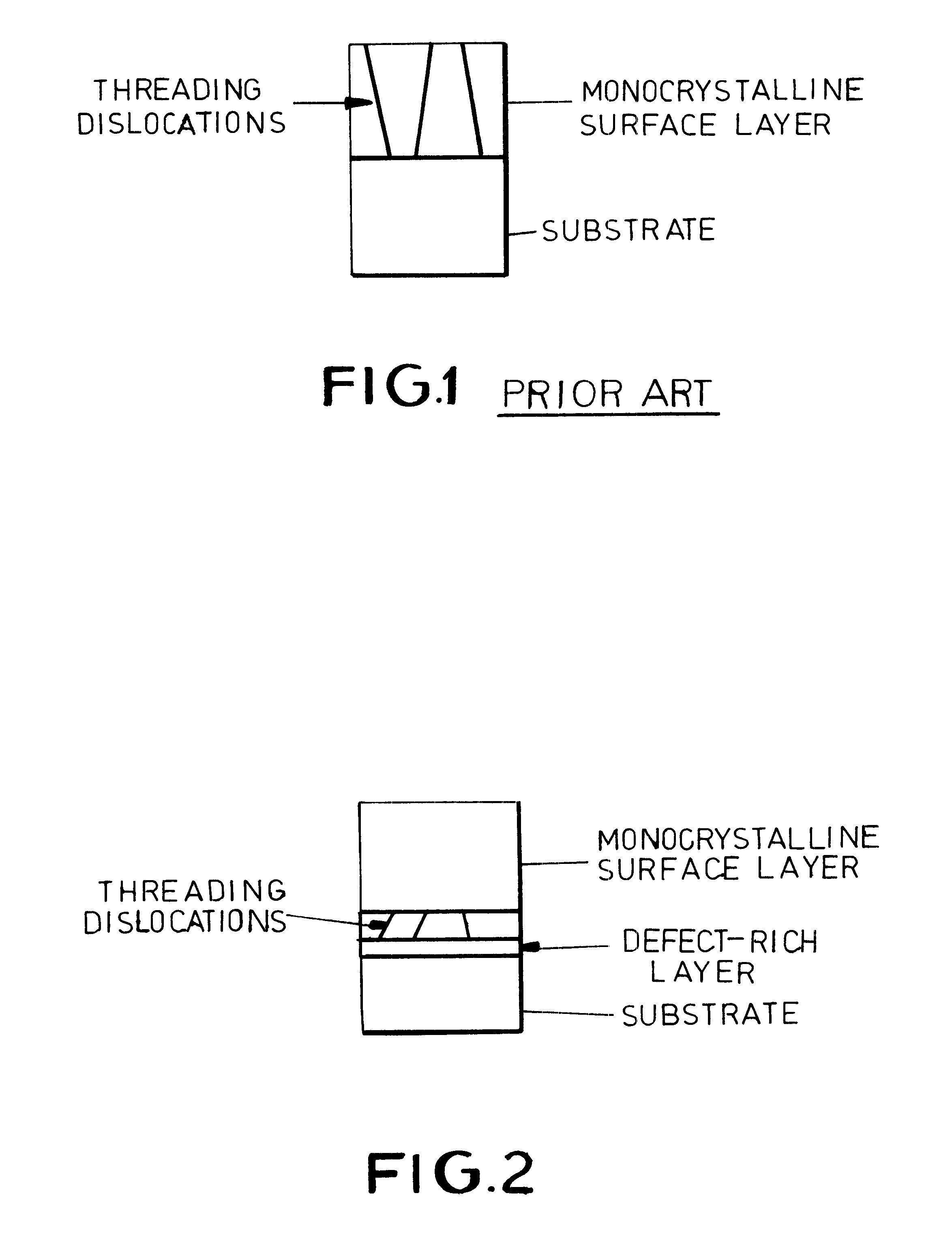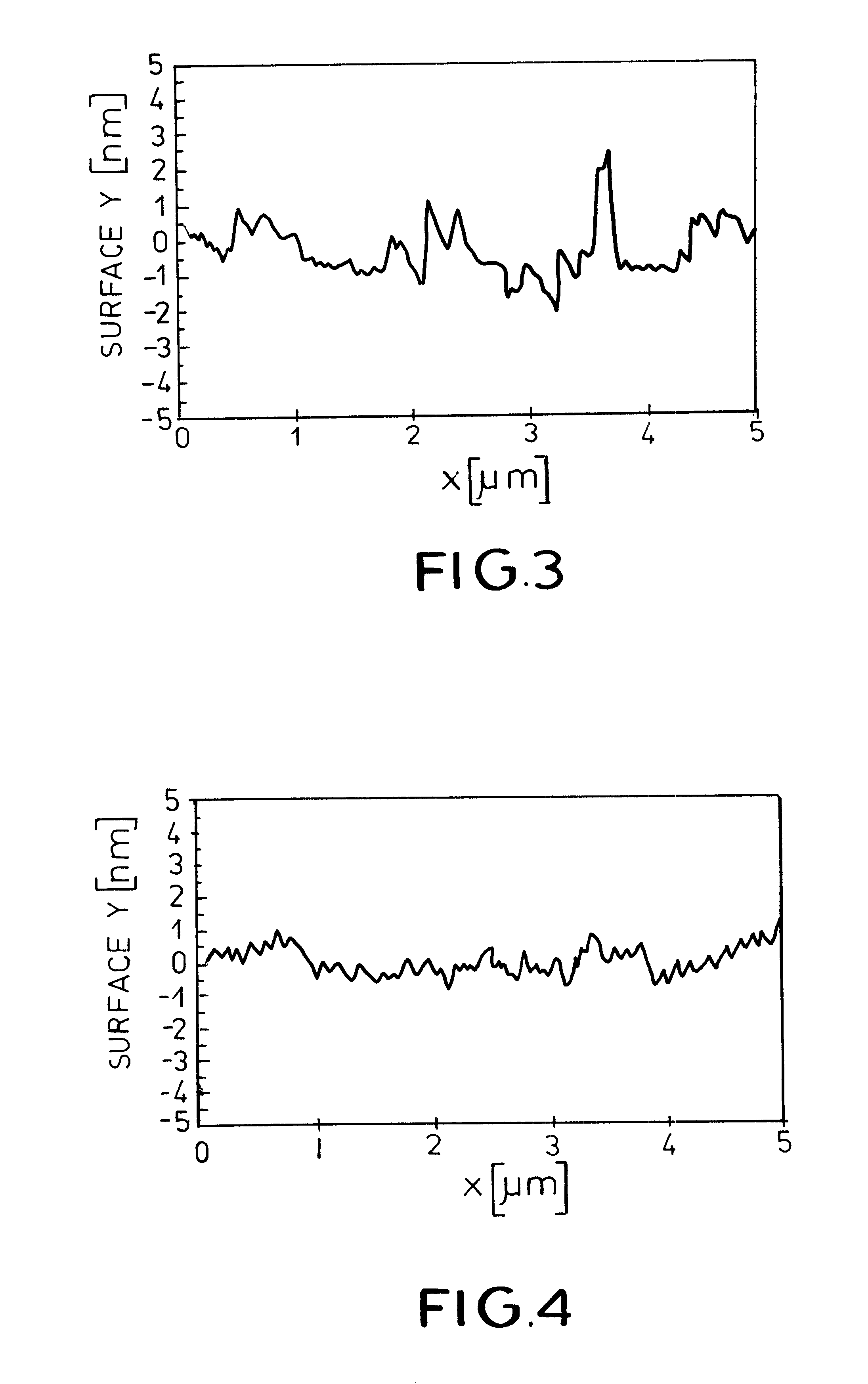Method for the production of a monocrystalline layer on a substrate with a non-adapted lattice and component containing one or several such layers
a monocrystalline layer and substrate technology, applied in the direction of crystal growth process, polycrystalline material growth, chemically reactive gas, etc., can solve the problems of weak limit of monocrystalline films, defects at the boundary layer, and reduced film quality
- Summary
- Abstract
- Description
- Claims
- Application Information
AI Technical Summary
Benefits of technology
Problems solved by technology
Method used
Image
Examples
example 2
Monocrystalline Si-Ge Mixed Crystal on Si and Subsequent Hydrogen Implantation
As the substrate, an Si wafer is used. This commercial substrate is cleaned as is customary in Si epitaxy to obtain a perfect and clean surface. Then at 500.degree. C., Si and Ge in a ratio of 80:20 are deposited by means of molecular-beam epitaxy (MBE). The thus obtained monocrystalline surface layer with a thickness of only 200 mm is under mechanical stress. After the epitaxy, the surface layer is implanted with an implantation apparatus with hydrogen with a dose of 1.times.10.sup.16 cm.sup.-2. The implantation energy of the H.sup.+ ions is so chosen, e.g. 20 KeV H.sup.+ that the buried defect-rich layer arises immediately below the boundary layer of the surface film and the Si substrate. By subsequent tempering (100.degree. C., 30 s) the mechanical stress of the surface layer is eliminated, whereby the dislocations run in the buried defect-rich layer in the Si substrate (FIG. 2). The thus produced SiGe ...
PUM
 Login to View More
Login to View More Abstract
Description
Claims
Application Information
 Login to View More
Login to View More - R&D
- Intellectual Property
- Life Sciences
- Materials
- Tech Scout
- Unparalleled Data Quality
- Higher Quality Content
- 60% Fewer Hallucinations
Browse by: Latest US Patents, China's latest patents, Technical Efficacy Thesaurus, Application Domain, Technology Topic, Popular Technical Reports.
© 2025 PatSnap. All rights reserved.Legal|Privacy policy|Modern Slavery Act Transparency Statement|Sitemap|About US| Contact US: help@patsnap.com



